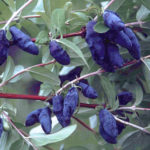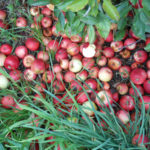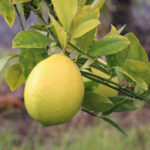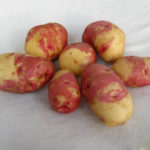Pepper variety Butuz
Many summer residents cannot resist growing sweet peppers, but not everyone can choose the varieties that are suitable for themselves. But we will help! Today we will consider the Butuz pepper variety.
Plant characteristic
This is a mid-early plant, the time from planting to the technical maturity of the fruit is 110 days, plus 20 days for ripening. The plant is large, moderately spreading, can reach a height of 80 cm. Leaves are medium in size. Fruit yield - up to 6 kg from 1 sq.m. The peppers are cone-shaped, divided into sectors, the tip is blunt. The fruits are very juicy and crunchy, with a peppery aroma, and can weigh over 200 grams. Wall thickness up to 7 mm. In technical ripeness, the peppers are green-white, in biological ripeness they are dark red with a waxy sheen. This variety keeps well and can be used fresh, dried and rolled.

Agrotechnics
The main condition is the cultivation of Butuz in greenhouses or under film shelters. This is the only way to get the maximum yield, but in the case of planting in open ground, the yield of fruits will be small, both in weight and in size.
Usually, seeds are planted at the end of February, after soaking them for two days in a solution of growth stimulants (Epin, etc.). Planting is carried out in prepared soil (sand and peat in a ratio of 1: 1) with the addition of several crystals of potassium nitrate. The first shoots appear on the 10-15th day. When 5 true leaves appear, the pepper dives into separate containers. You can plant seedlings in a greenhouse when the soil temperature reaches 12-15 degrees, usually in mid-May. The plant is formed into two stems, all stepchildren are removed before the first fork.
Pepper Butuz is unpretentious, and caring for it consists in timely watering and loosening the soil, also do not forget about fertilizing with mineral fertilizers - there should be at least three of them. The variety is immune to many diseases, but it is necessary to carry out one or two preventive treatments with antifungal drugs. The main trouble that can happen with pepper is the invasion of aphids, she loves fresh flower tops very much. If aphids are found, it is necessary to immediately treat the plant with insecticide solutions (Aktara, Biotlin).
Due to the large number of fruits, pepper shoots can sometimes break, to prevent this, the plant must be tied up. When there are enough fruits on it, all the flower heads are removed, this stimulates the plant to grow and ripen quickly. Fruits are usually harvested when they begin to turn brown on one side or are already fully ripe.









Butuz planted both in the greenhouse and in open beds, since the germination of seeds turned out to be almost one hundred percent, and a lot of seedlings grew. Immediately, I note that the variety is absolutely not capricious to the conditions, the harvest, if it differed slightly in favor of the greenhouse, is quite insignificant. A garter is required, because almost the same amount of leaves and peppers grows on the bushes, and the weight of the fruit puts strong bushes on the ground. I never break off the flowering tops, I remove only the lower processes to the first fork. Therefore, we collect peppers before frost. Their taste is very delicate and refreshingly sweet. The upper skin only seems to be waxy, in fact it is thin. When dried, reddened fruits retain their full fresh aroma.